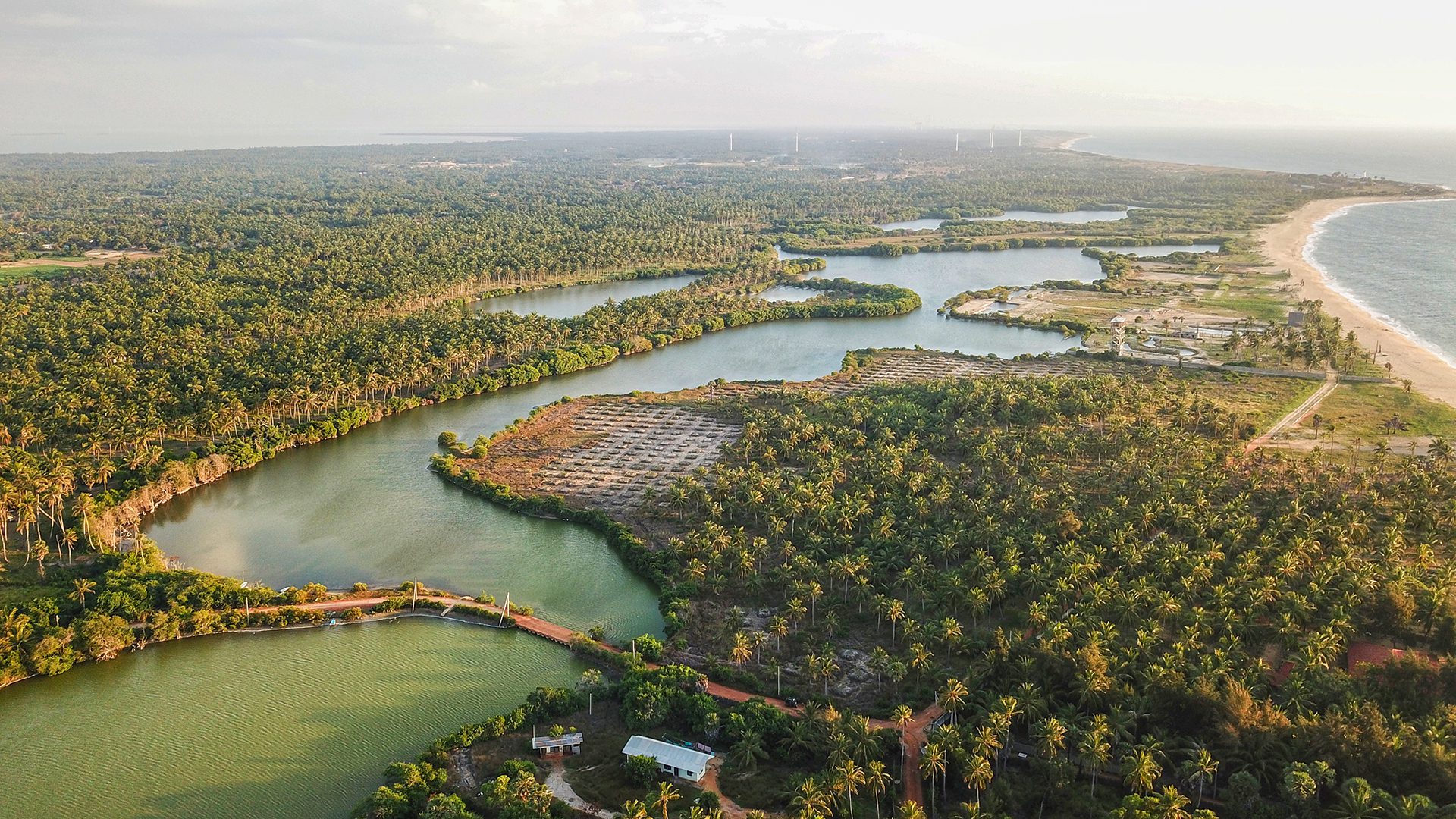[vc_row][vc_column][vc_column_text]Experience the tropical bliss in sweeping flat waters and eco-resorts putting a small coastal village on the tourist map.
Wearing a bright, ear-splitting smile, a young twenty-something serves me two slices of kiribath with lunumiris. Kiribath is rice cooked in creamy coconut milk until it turns delicately soggy. It’s best devoured with lunumiris – an onion relish made with chopped red chilli, a hint of lime, and Maldive fish. He then pours a cup of Earl Grey, a fine variety of Sri Lankan tea. At 22 years old, Kasun Tharaka works at the kitchen department at Elements Resort. He’s dressed up in his resort uniform – an aqua blue t-shirt and a brown sarong – the relaxing tropical attire of the island men in Sri Lanka.
“A tropical fruit platter and village buffalo curd?” he asks me with a dazzling smile. I start my breakfast with coconut roti and seeni sambal. It’s caramelized onion subtly flavoured with Indian Ocean spices. It’s deep golden brown in colour. The coastal breeze blows across my face while the warmth of the morning sun reflects on the aqua blue waters. The family next to my table makes plans for their day.
Elements Resort has a communal dining room. This open-air dining room overlooks the sprawling turquoise blue waters of the majestic Indian Ocean. Similar to several other resorts in the village of Kappalady, Elements Resort is committed to sustainable luxury. A few years ago, Kappalady was a rural hamlet with little or no infrastructure. Men and boys went on fishing while girls and women remained indoors.
But things changed with kitesurfing.[/vc_column_text][/vc_column][/vc_row][vc_row][vc_column][vc_column_text]

Kayaking in Kappalady
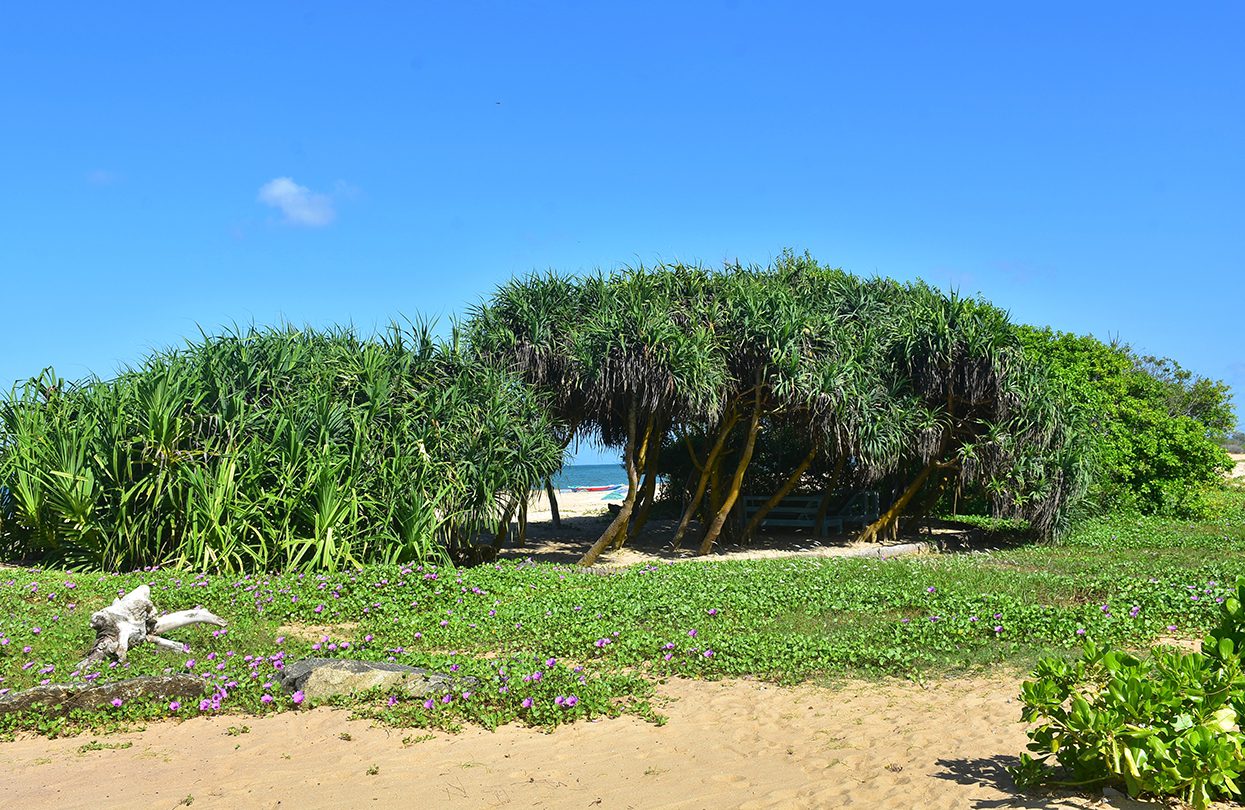
A warm tropical afternoon
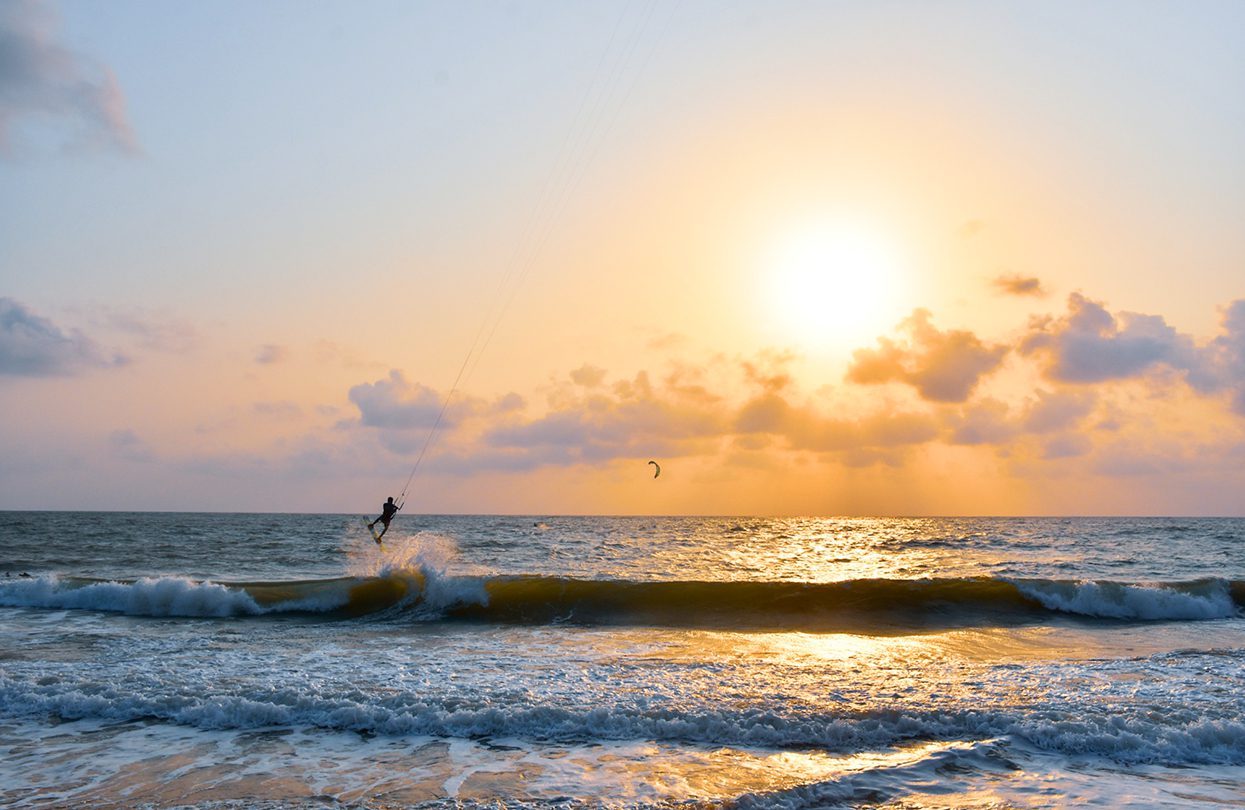
Sunset kite session in Kappalady
[/vc_column_text][/vc_column][/vc_row][vc_row][vc_column][vc_column_text]Kappalady belongs to the Kalpitiya Peninsula along the Northwestern coast of Sri Lanka. This rustic, withered peninsula fringed with coconut palms and palmyra palms win a mention in every kitesurfing magazine. From large, sprawling lagoons to smaller beginner-friendly flat waters, inhabited islands and remote islands far off the coast, the region hosts many spots for those who chase the wind. Discovered by Swiss pilot Marcel Bobay from his flight deck, Kappalady sits right across the ocean. The beach is a large thick sandbank, the kind of powdery sand which shines like stardust in warm tropical afternoons. It separates the ocean and the two lagoons dotted with mangroves. The flatwater lagoons are shallow, drawing beginners and expert kitesurfers daring to try new tricks.
The wind blows steady and fast for nine months of the year, changing its direction from northwest to southwest. During the windy months of May-September and December-March, Kappalady welcomes kite riders from across the globe into its luxury eco-resorts.
“Good morning,” HashanAmith offers me a gleeful smile as we walk into Kite Center Sri Lanka, the kite school at Elements Resort. He picks up our kite gear and walks us through the path clad with light pink wildflowers. At 23, Hashan is a father to a baby daughter.
“I couldn’t continue school and I used to go fishing. But there was no regular income,” Hashan tells me. “That’s when I first came across the kite camps in the village,” He reveals me the beginning of his kitesurfing journey. Hashan is now an IKO certified assistant kite instructor. “I joined the resort as a gardener but they encouraged me to learn kitesurfing. I watched videos and practised new tricks every day,” he says[/vc_column_text][/vc_column][/vc_row][vc_row][vc_column][vc_column_text]
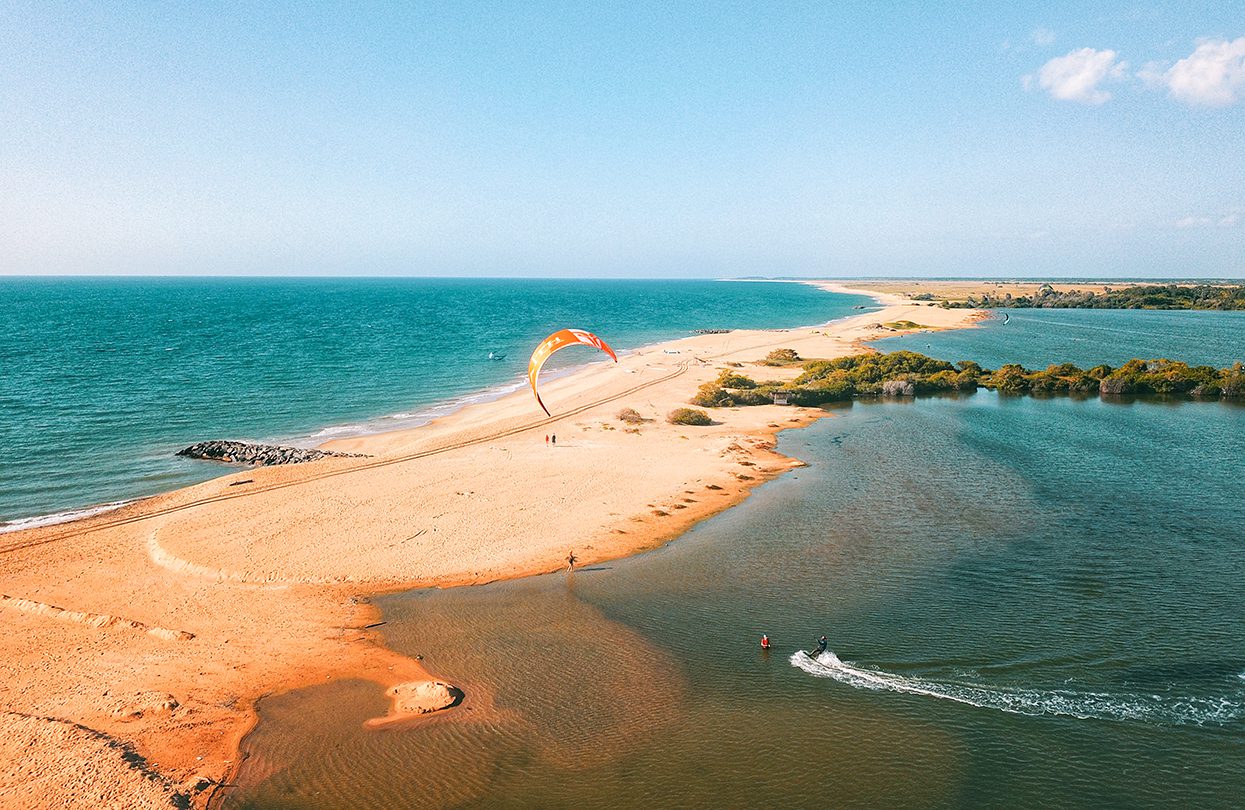
Kitesurfing in the lagoon
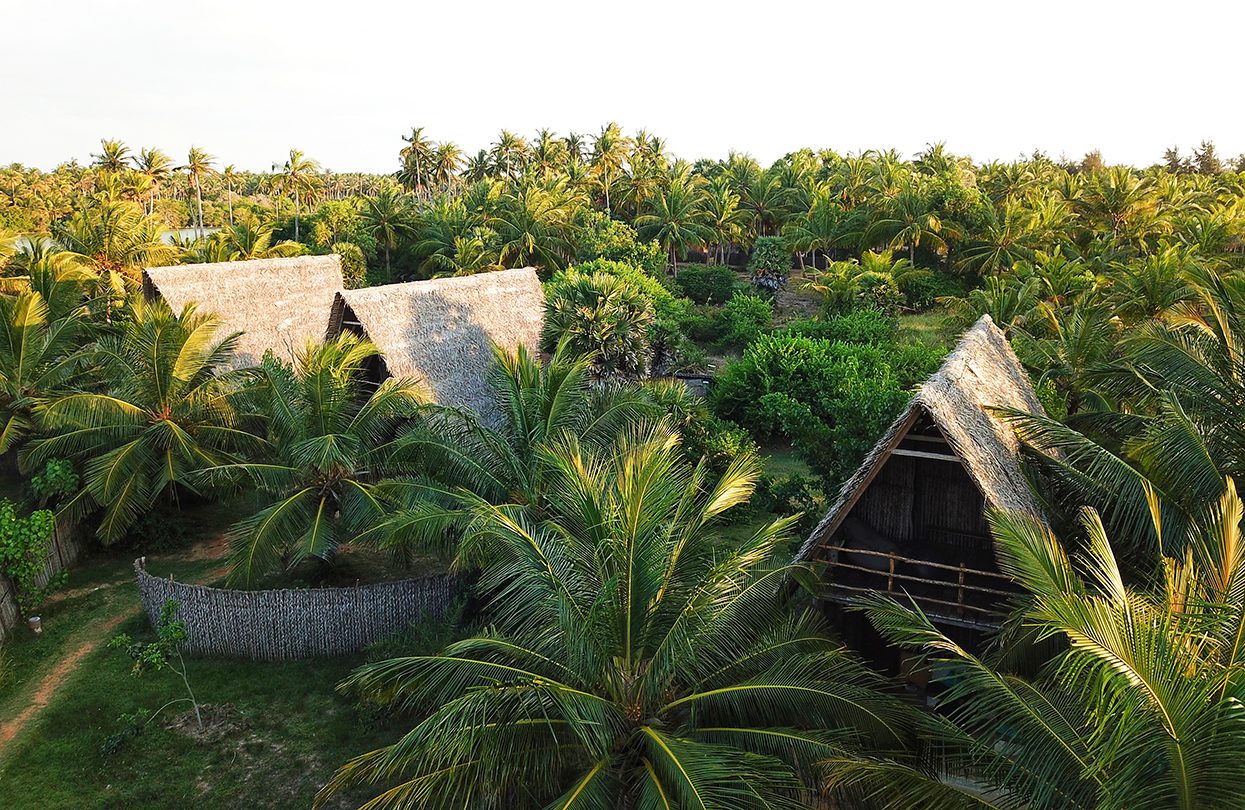
Thatched-roofed cabanas
[/vc_column_text][/vc_column][/vc_row][vc_row][vc_column][vc_column_text]Across the lagoon is Mawfeer Khan, Hashan’s friend and an IKO certified kitesurfing instructor at Kite Kuda, a resort by the lagoon. Like Hashan, Mawfeer too hails from Kappalady. Trodden with many difficulties, his impoverished childhood soon began to change with kitesurfing. Tall, well-built, dressed in a black tank top, and a pair of shorts trimmed with palm leaf patterns, Mawfeer is best found in the lagoon. His expert skills and attention-to-detail guidance attract many kitesurfers to Kite Kuda, but it’s his warm, friendly nature that keeps them returning.
The next day I wake up early in my thatched-roofed cabana. The sound of the gently lapping waves that put me to sleep the previous night keeps reoccurring. There’s a coffee in my hand, birdsong, and the filtering rays of the morning sun. Palm leaves rustle while a drove of unofficial resident donkeys take a stroll along the resort path. I hear the faint hum of the breadman. It’s the distant sound of Beethoven’s Fur Elise. He rides his tuktuk every morning around the village, selling loaves of fresh-off-the-oven bread to local households.
Committing to their mission of 100% sustainability, the cabanas at Elements Resorts are built using eco-materials. Most of them are locally sourced. Water trickles down the open-air rain showers, a welcoming shower at night for stargazers. As I tip-toe to the shower (which is built using a coconut palm midrib) the pink orchids that cling the holding tree dance by the coastal wind.
Tourism in Kappalady was a result of its world-class kitesurfing conditions, empowering the entire village socially and economically. Luxury resorts not only employ the local community but also uplift them with skilled training. While it remains a mecca for kitesurfers, there’s more to this Sri Lankan hamlet. Kayaking and paddling across the dense mangroves, tick. Yoga and luxury wellness by the ocean, tick. Marine expeditions, tick.
And today, I’m off to a marine safari.[/vc_column_text][/vc_column][/vc_row][vc_row][vc_column][vc_column_text]
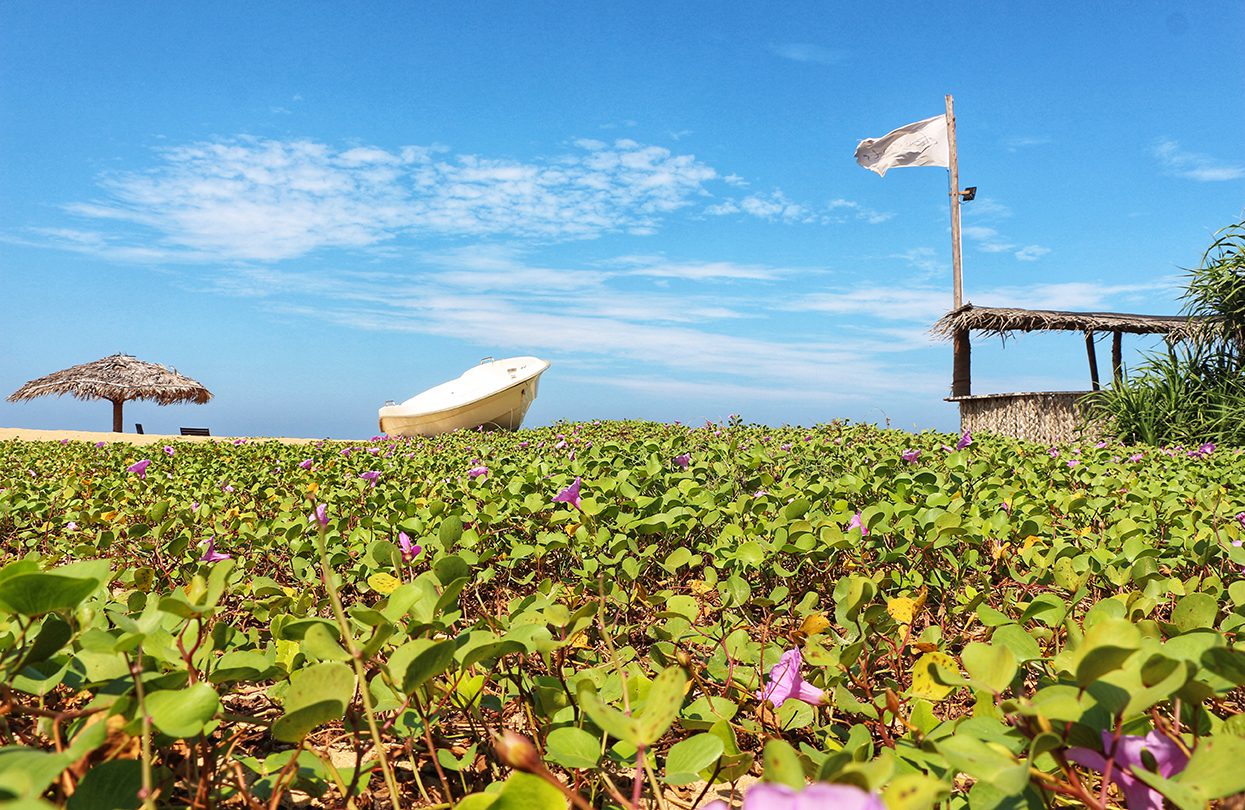
Morning view in Kappalady
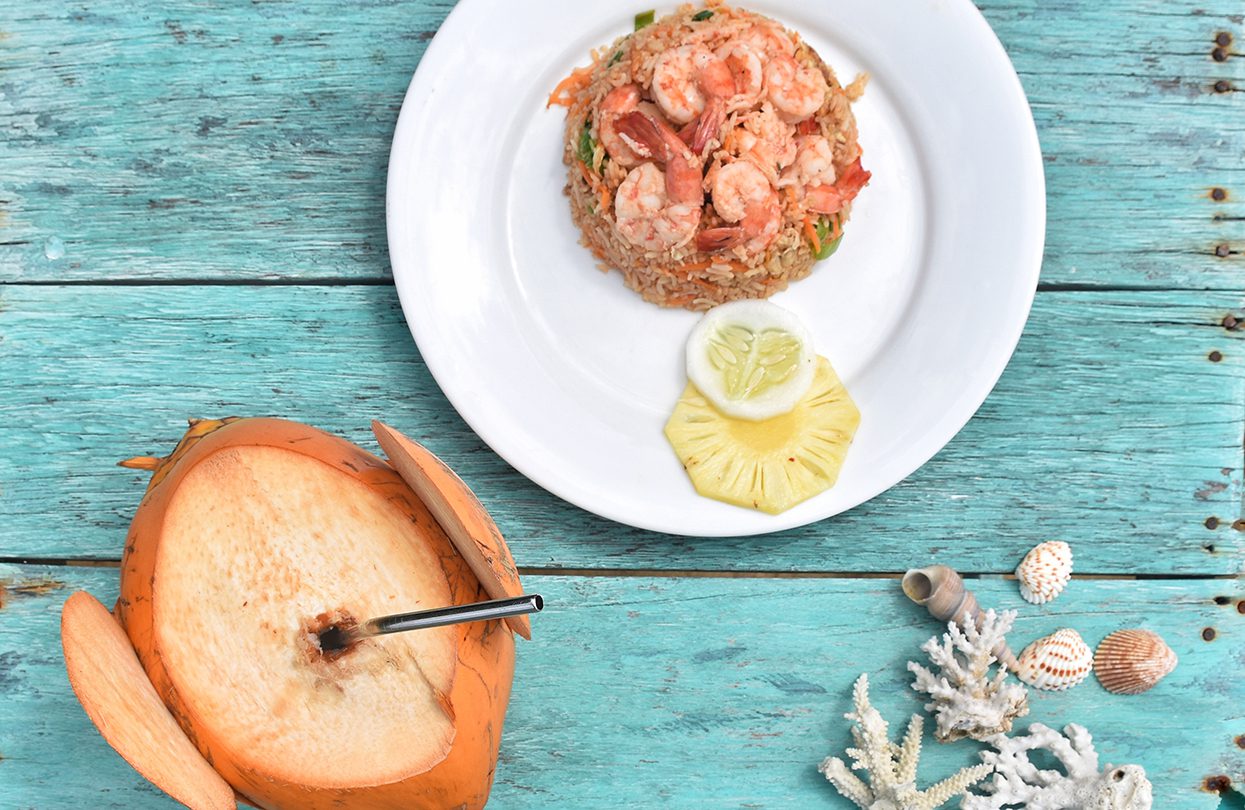
Lunch at Elements Resort

Kite lessons with local kite instructors
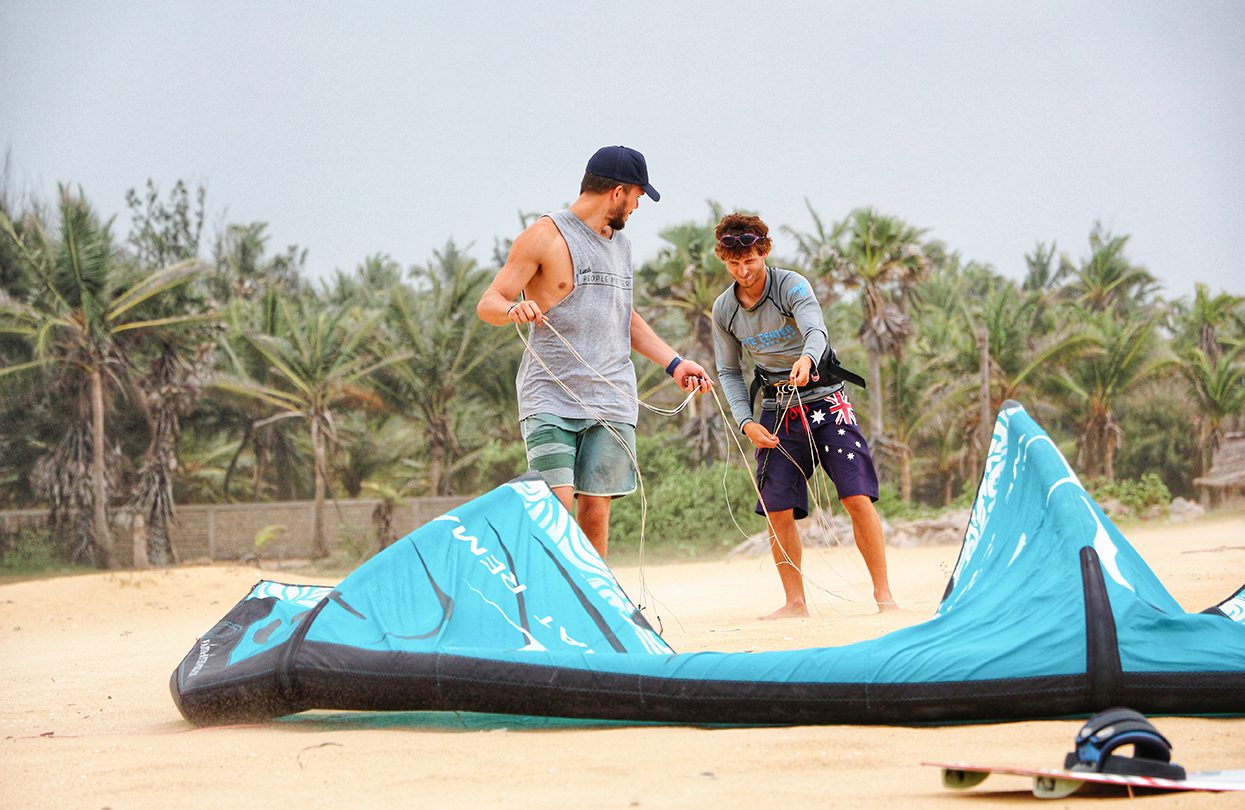
Kite gear
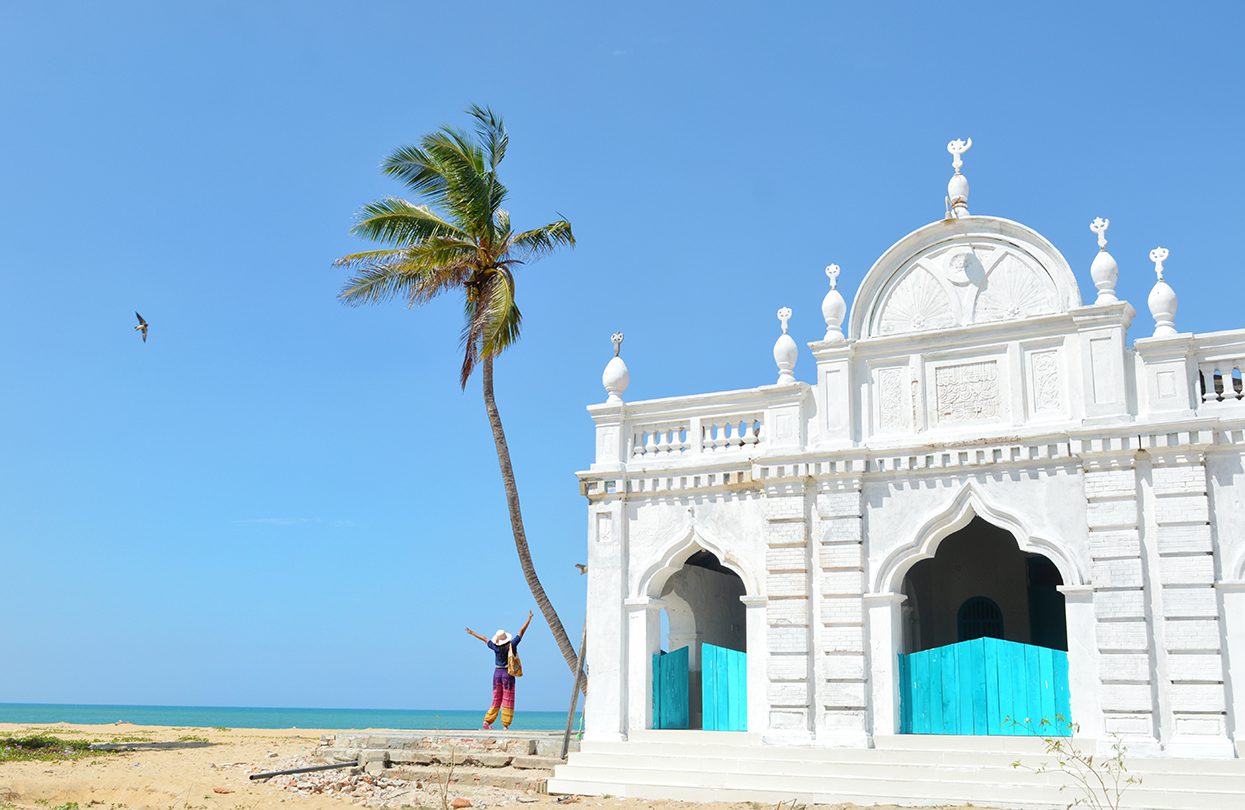
Kappalady Mosque
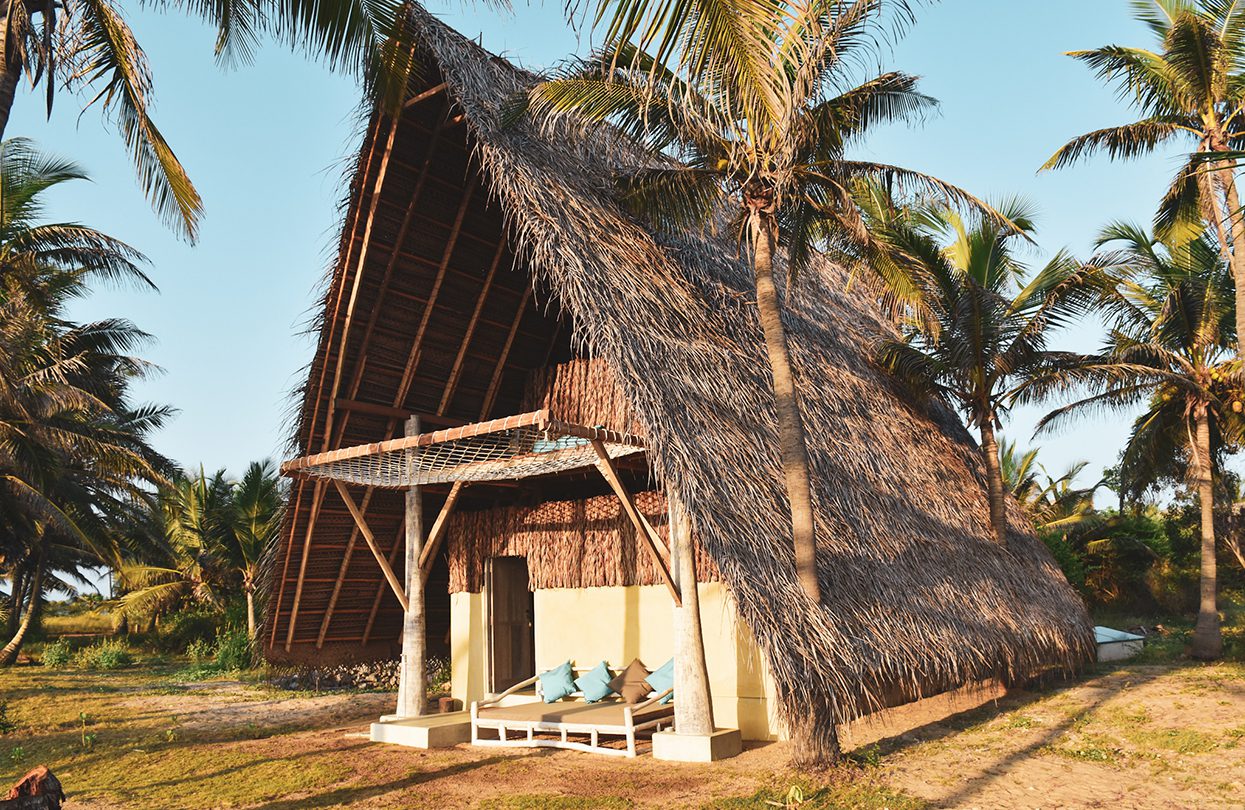
Eco-friendly sea cabana
[/vc_column_text][/vc_column][/vc_row][vc_row][vc_column][vc_column_text]I walk past the volleyball pitch and the resort’s pool. My boat is ready. We sail on the ocean for half an hour until we come across pods of spinner dolphins. Swimming past our boat, they take astounding leaps in the air, bringing us joy. We sail further in the ocean to spot one large orca – or, a killer whale. Despite its convincingly misguiding name, killer whales belong to the dolphin family and are the largest of them. From October till May, the surrounding blue oceans near Kappalady also provide breeding grounds for whales, such as humpback whales, sperm whales and even the blue whales – the largest creatures on Earth.
As I return to the shore, I find Kasun with his usual radiantly sunny smile and a glass of fresh papaya juice with a hint of squeezed lime. “Would you like to have your Sri Lankan egg omelette now?” He asks me before serving me a plate full of Sri Lankan hoppers. Crispy on the edges, soft and mushy at the bottom, hoppers are a bowl-shaped island delicacy made with pancake batter.
I munch on my hoppers as I let the powdery sand cling to my feet. Perhaps, there’s nothing more blissful than gobbling up your tropical island breakfast by the beach. When you visit, do not forget to ask Kasun for rice served with multiple curries cooked in thick, creamy coconut milk. Warning: you’d want to return. Words by Zinara Rathnayake & Photographs by Nathan Mahendra◼[/vc_column_text][/vc_column][/vc_row][vc_row][vc_column][vc_column_text]Subscribe to the latest edition now by clicking here.
© This article was first published in Feb-Mar 2020 edition of World Travel Magazine.[/vc_column_text][/vc_column][/vc_row]

